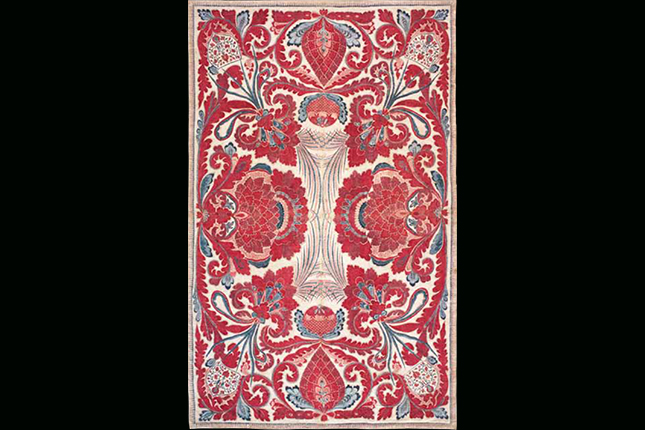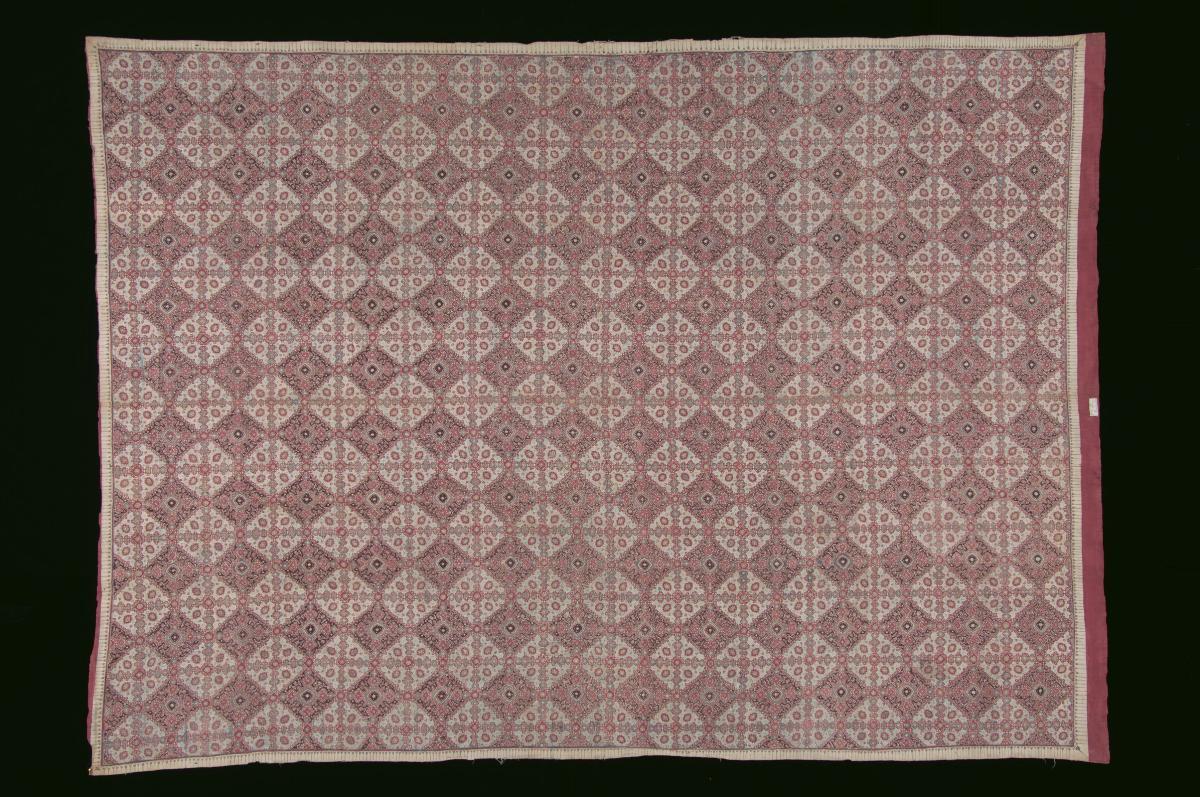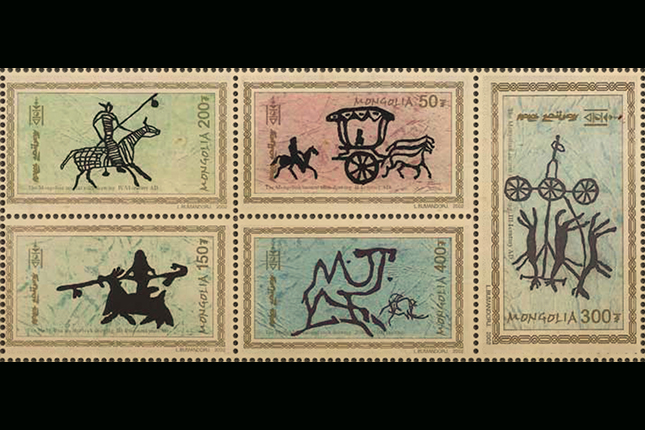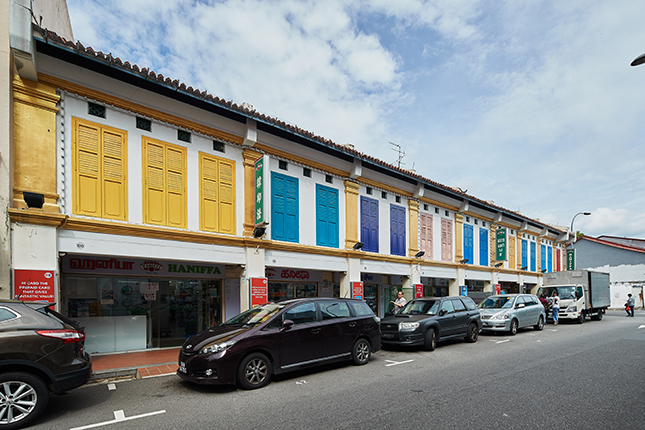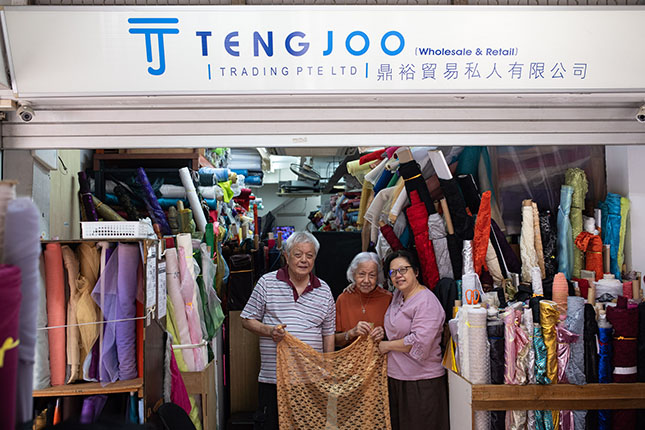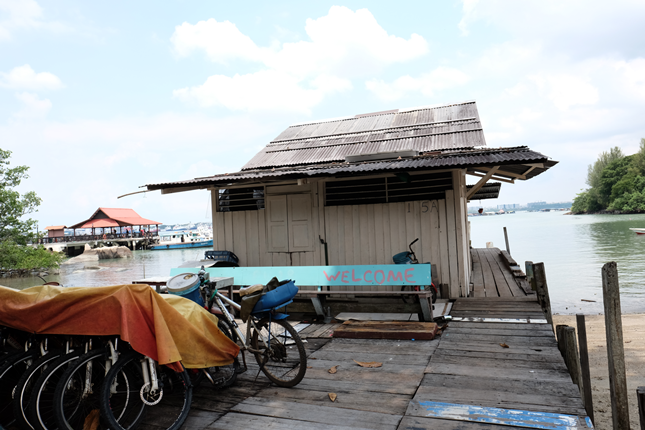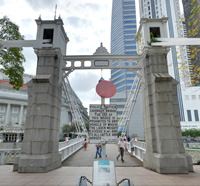Text by David Alan Henkel
Images courtesy of Asian Civilisations Musuem
BeMuse Volume 5 Issue 1 - Jan to Mar 2012
For the better part of the past two millennia from the time of writing in 2012, India was a leading source of textiles for trade. Cotton cloth, along with a much smaller but highly valuable quantity of silk, was traded from production and distribution centres in Gujarat in northwest India and the Coromandel Coast in the southeast. Little known today, these textiles had a wide ranging and lasting impact on human civilisation in interesting and sometimes surprising ways. These textiles were the subject of the exhibition, Patterns of Trade: Indian Textiles for Export, 1400-1900, held at the Asian Civilisations Musuem until 3 June 2012.
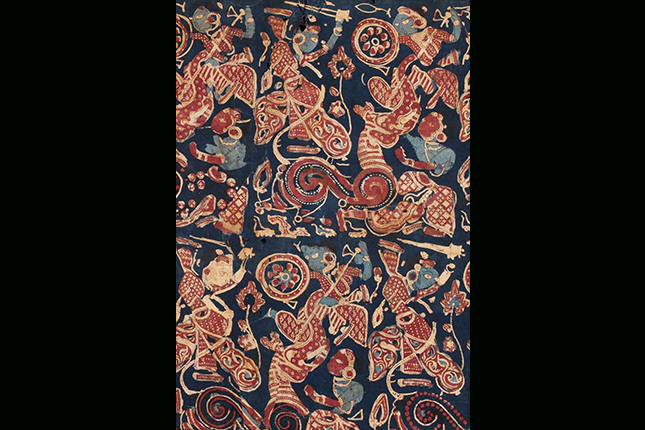
Evidence from excavations in the Indus Valley dating back to about 4,500 years ago shows that Indians had already developed the technology to weave cotton into cloth at that time. Two thousand years ago, Indian artisans and traders had built on their knowledge, along with a parallel expertise in painting and dyeing cloth, to become the world’s leader in textile production. They had held this position until the Industrial Revolution in the 19th century.
India’s advantage in textile production not only stemmed from its technological edge. The Indian subcontinent had a large population, which provided the workforce to perform the labour-intensive job of producing textiles. India also had ample land and a distinct dry season that made the region an ideal place to grow cotton. These advantages allowed Indian producers to manufacture a large surplus of cloth which it could trade to foreign markets.
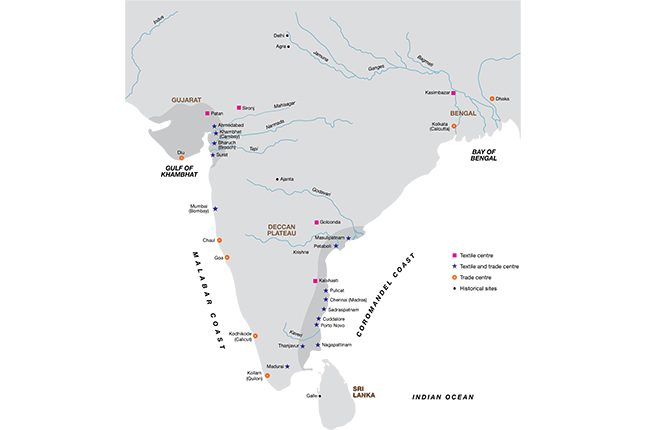
The bulk of India’s textiles were cotton of modest quality – plain colours or simple, repetitive patterns of checks, stripes or floral lattices. These textiles were sold in foreign marketplaces more cheaply than cloth could be produced locally. At the other end of the market, India’s weavers and dyers were capable of producing cotton and silk textiles of exquisite quality and beauty.
The Indian textile industry was both productive and efficient. First, weavers living in or near cotton growing areas would process and weave the cotton into cloth. Next, the cloth would be graded; following which middlemen would purchase the cloth and send it to workshops for dyeing, printing and painting. Dyers had to be located near adequate sources of clean water to ensure the quality of the bright and colourfast dyes which India was famous for. After dyeing, the agents would sell the cloth to merchants heading to foreign ports. India’s traders had developed a sophisticated understanding of the markets they served, providing feedback to producers on the types and qualities of cloth that were most in demand. These merchants, often settled and had families in their host markets, knew the tastes of their customers and were able to relay information to the agents about what colours, designs, formats and levels of quality were most desirable. At the height of the Indian textile trade, merchants even brought back local designs and motifs which the painters and dyers faithfully copied.

The earliest evidence we have on foreign trade of Indian textiles is in the Roman account of the first century. The Romans called Indian cotton “woven air”, in praise of its lightness and quality. These accounts described Indian cloth as a luxury good; however, the quantities were sufficient for Pliny the Elder to complain in 77 CE (Common Era) that Roman coffers were being emptied into India. Historical records from about the same period also mention Indian cotton being sent as gifts to the Emperor of China. The oldest examples of Indian cloth are fragments found at archaeological sites in Egypt, along the coast of the Red Sea at Berenike (old Bernice), and date to the fifth century. More fragments, which date from the ninth century, were excavated at Quesir Al Qadim and Fustat (Old Cairo).
The fragments found in Egypt are proof that trade in Indian cloth continued to flow even after Rome’s gradual decline. The Islamic world also embraced Indian textiles after its rise in the seventh century, and the new religion spread to both South and Southeast Asia along the same routes on which Indian textiles were traded. By the end of the 15th century, this robust and complex network had spread throughout the Indian Ocean basin and from the western coast of Africa to China.
When the Portuguese captured Malacca in 1511, the Portuguese chronicler Tomé Pires estimated that the annual value of Malacca’s textile trade was worth 460,000 cruzados, the equivalent of almost 20 tonnes of silver. At that time, Malacca was one of the world’s richest cities, and Southeast Asia had grown to be a crucial market for Indian trade cloth. Island Southeast Asia was also the source of some of the world’s rarest and most desirable spices and aromatics, as well as other valuable commodities. Aside from the fragments found in Egypt, the earliest Indian trade textiles which survive today were found in the eastern half of the Indonesian Archipelago. These came from the remote islands of Maluku, as well as Timor and especially from the Toraja Highlands of Sulawesi. Some of these textiles have radiocarbon dates which range into the late 13th century.
Maluku, a tiny cluster of islands in the far Eastern Archipelago, was for much of history the world’s only source of nutmeg, mace and cloves. These so-called “fine spices” were used to preserve and flavour food as well as for their perceived medicinal powers. For centuries, these spices were literally worth their weight in gold in the West. Not surprisingly, traders flocked to the islands, bringing with them Indian cloth which were highly prized by the islanders.
While Maluku was more important economically during the time of the spice trade, it is Toraja which is the source of most of the earliest trade textiles that have been found. The Toraja called these textiles ma’a or mawa and believed that they served as a sacred bridge to the afterlife. Ma’a were used in funerals and other rituals and allowed the Toraja to interact and communicate with their ancestors. After the Dutch took control of the coastal ports of Sulawesi, the Toraja became isolated from the outside world and could no longer replace their Indian cloth. Instead they had to carefully preserve these textiles for generations, whereas in most other areas the cloths eventually disintegrated, were lost or replaced.
Early inscriptions found at archaeological sites clearly indicate that Indian cloth had been traded into Sumatra, the Malay Peninsula, Borneo and Java in as early as the ninth century. The earliest and finest pieces discovered in this area, however, date from the 17th and 18th centuries. These were found in the remote interior areas of kampung and Jambi in southern Sumatra, and almost all originated from the Coromandel Coast.

The reasons for this are complex. For one, the pepper boom of the 17th century had significantly increased the flow of cloth into the region during this period. More importantly, large amounts of top quality cloth were brought in by traders as gifts to local rulers. These found their way into the interior of Sumatra where they came to be valued as a form of currency which could be accumulated as wealth. These cloths eventually became heirlooms and were used in social rituals such as wedding exchanges. While the practice of storing these textiles as wealth was eventually abandoned by the more cosmopolitan trading centres of the coast, the people of Lampung carefully stored their early trade textiles until the 1970s and 1980s, when they began to re-emerge in the antiques market.

In the 17th century, the European East India Companies began shipping Indian cloth home along with cargoes of spices and Chinese porcelain. The cloth quickly became a sensation. Compared to the drab woollens and linens the Europeans were used to, the Indian cloth’s beauty, quality and affordability made them hugely popular in Europe. European textile producers at first were unable to compete, which in turn threatened the livelihoods of tens of thousands of local textile workers. Even high taxes and import restrictions could not halt the flood of Indian cloth into Europe.
Beginning from the 18th century, innovators in Europe began to seek out the secrets of Indian textile production and started to develop ways to manufacture cloth more cheaply and efficiently. Mechanical innovations provided the key. Over the course of the century, new machines led to an explosion in productivity, which helped spark the Industrial Revolution.
By the mid-19th century, Europe was exporting more cloth to India than it imported. This cloth was cheaper and of better overall quality. European producers also captured much of India’s market share in other Asian and African markets. This had a disastrous impact on India’s textile industry, wiping out almost all of India’s indigenous textile production.
Indian trade textiles had a lasting influence on the development of textile designs. While the new machine-made cloths were less expensive and more consistent in quality, they continued to draw on the design legacy of their Indian predecessors. The bright floral prints and dense styles of the 19th and early-20th centuries were direct descendants of Indian chintzes traded to Europe hundreds of years before.
Nowhere else perhaps is the influence of Indian trade textiles more noticeable than in island Southeast Asia, where many of the indigenous textile traditions were profoundly shaped by their long and nearly continuous interaction with Indian cloth. Indigenous communities around the archipelago actively incorporated the designs and motifs of Indian cloths into their own textiles. As the 18th century progressed and Indian textiles became more expensive, textiles made in Indonesia began to replace Indian cloths. Inexpensive and high quality machine-made plain white cotton from the Netherlands provided the raw materials for a boom in batik production in Java, which the Dutch colonial government actively encouraged.
Even today’s fashion has continued to draw on the legacy of popular Indian designs. Once familiar with the designs, you will begin to spot them everywhere, such as in the repeating floral spray of a printed dress and in the scrolling border of a hemline. Indian trade textiles have left an indelible mark on the way we dress ourselves and decorate our homes. Perhaps even more profoundly, Indian trade textiles are a reminder that the globalised world we live in today has roots that go back thousands of years.
David Alan Henkel is Curator, Asian Civilisations Museum




